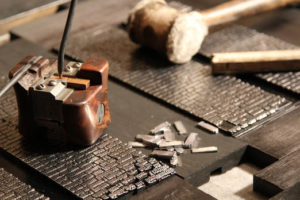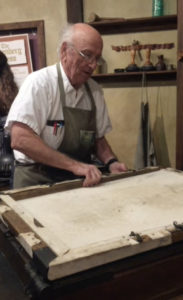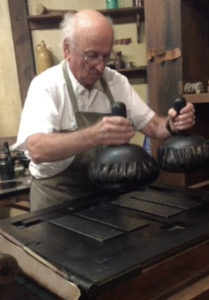
The television turns on and is tuned to BYUtv. The choir starts to sing as the camera pans over flowers. Thousands of members of The Church of Jesus Christ of Latter-day Saints tune in worldwide to listen to General Conference, not paying much thought to the ease of their enjoyment.
Early church members did not have such easy access to church addresses. Rather than in-hand apps or satellite broadcasting, early church members had to receive the word of God in person or in text.
The church was founded in 1830 by the Prophet Joseph Smith, and although printing presses — which have been around since the 1440s — were available, they weren’t readily accessible at the time, according to the church’s website.
The first General Conference occurred on June 9, 1830, but was not published in print until 1850 when George D. Watt transcribed the talks for the Deseret News, according to the church’s website. The first conference radio broadcast did not occur until 1923, followed by television in 1949.
Since 1850, printed reports have served an important role in spreading conference talks to the world, similar to the Book of Mormon.
According to the church’s website, Joseph Smith spent an estimated 65 days translating the Book of Mormon before it came time to print. He later made a deal with Palmyra, New York, printer Egbert B. Grandin to print 5,000 copies of the religious book.

The Book of Mormon was first sold in the Grandin bookstore in March 1830. Almost 150 years later, the printing shop was restored as a historical site owned by the church, according to their website.
The Crandall Historical Printing Museum in Provo experimented with printing 5,000 copies of the Book of Mormon the same way they were printed in 1830, according to the museum’s website.
The Crandall museum opened in 1998 and is home to “the only working Gutenberg Press in the world,” according to a plaque affixed to the building. Guests can tour the museum to learn more about the history of printing, from the creation of the Gutenberg press up to the printing of the Book of Mormon.
Video showing Jim Watkins giving a tour of the Crandall Historical Printing Museum (Video by Holly Ferguson)


Museum tour guide Jim Watkins said the Gutenberg press has had a big impact on the church’s ability to mass-produce printed texts.
“Gutenberg invented the movable metal type and it has had an effect on the world from the founding of America and to the Book of Mormon,” he said. “Without this, we wouldn’t have the Book of Mormon. Until this was invented, they were still handwriting things with quill pens.”
The museum also holds a 1700s English Common Press and an Acorn Hand Press, according to their website. The Acorn Press was used to print the Book of Mormon replicas.
“The printer is an exact replica of the one that printed the Book of Mormon. They took the original press, took everything apart and cast it. In those casts they made two or three presses,” Watkins said.
Brigham Young University classes — like history of graphic design — often bring students to the museum to learn about the printing of early church documents.
“It all started in the age of technology. Printing helped get the information out in the world for people. It helped to get these things invented,” Watkins said.




